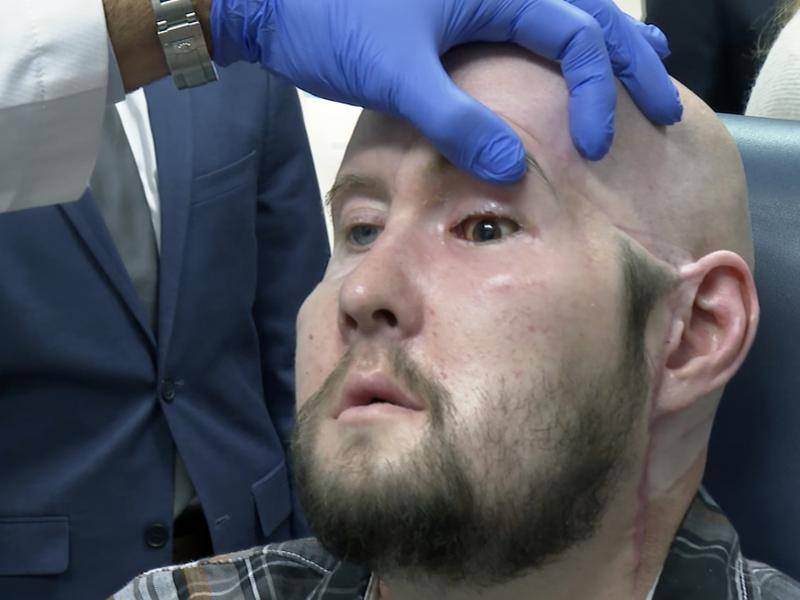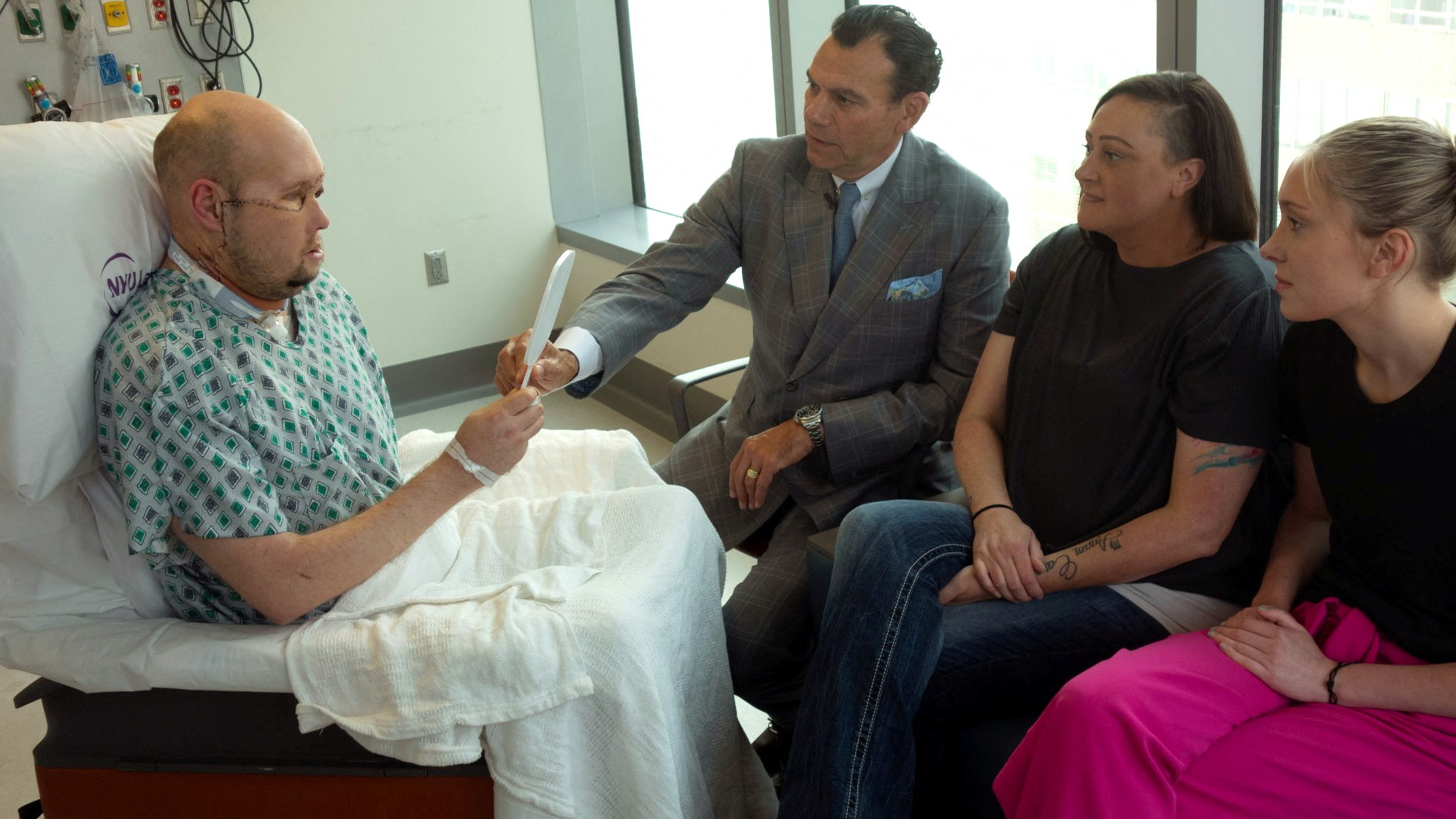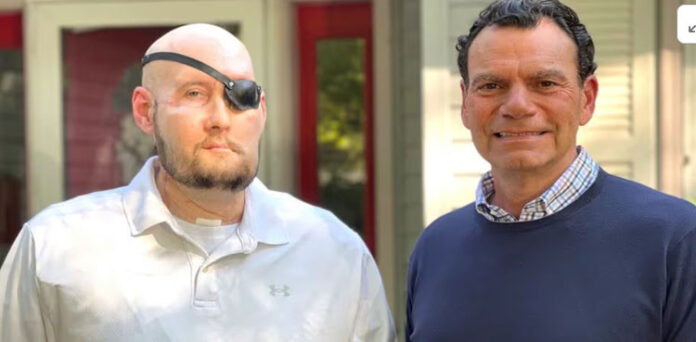New York surgeons announced that they had successfully conducted a complete transplantation of a human whole eye. Although the patient has not regained sight in the affected eye, this achievement is being heralded as significant.
According to the surgical team at NYU Langone Health, in the half-year since the procedure, which involved a partial face transplant, the transplanted eye has demonstrated significant health indications, such as functional blood vessels and a promising-looking retina. Dr. Eduardo Rodriguez, the team leader, stated that achieving the transplantation of an eye marks a significant advancement. This accomplishment, contemplated for centuries, has never been realized until now. Until recently, medical professionals could only transplant the cornea or the eye’s transparent outer layer.

The 46-year-old Arkansas veteran, Aaron James, who is receiving the eye, was involved in a high-voltage electrical accident at work that left him without a left eye, nose, mouth, or the left side of his face. The transplant procedure took 21 hours. Initially, Rodriguez stated in a Zoom interview that the doctors’ only intention for the eyeball to be a part of the face transplant was cosmetic. Moreover, Rodriguez conveyed that, although the idea of restoring vision is noteworthy, their main objective was to execute the technical procedure successfully and maintain the integrity of the eyeball. He stressed that all upcoming progress will be thoroughly monitored.

The prosthetic eye currently does not use the optic nerve to communicate with the brain. During the transplant, adult stem cells were extracted from the donor’s bone marrow and injected into the optic nerve of the recipient. The idea was that these cells would replace damaged ones and shield the nerve, promoting healing of the link between the donor and recipient optic nerves. Even if sight is not restored in this situation, Rodriguez stated that transplanting a viable eye globe provides many new possibilities. According to him, other study groups are working on techniques to attach electrodes to blind eyes to establish a connection between the brain’s nerve networks and the eyes themselves. Rodriguez expressed that they are making progress, and collaboration with researchers exploring different approaches to restore vision or transmit images to the visual cortex could bring them closer to their goal.

Knowing he might not be able to see in the transplanted eye, James, who was blind in his right eye, was prepared for this possibility. The man asserted that there was disbelief regarding the success of the endeavor. I conveyed to them that despite my blindness, there might be valuable lessons for everyone to glean. He commented, “You initiate the process like this,” expressing optimism about forging a new path. Rodriguez suggested the possibility of James regaining vision in the transplanted eye, emphasizing that no one can confidently predict his sight restoration. On the flip side, Rodriguez, notes that they are unable to claim definitively that he will not regain his sight. “Presently, I feel content with the results we achieved through a procedure that posed significant technical challenges,” he remarked.
- Misleading Video Alters Prime Minister Shehbaz’s Speech Targeting Political Rival, Not His Party - 21/04/2024
- ATC Grants Three-Day Remand for Suspects in Ichhra Bazaar Harassment Case - 19/03/2024
- Pakistan, India, and Bangladesh Lead World in Severe Smog Crisis, Exceeding WHO Guidelines - 19/03/2024


